Archaeologists love the unknown. We are drawn to the challenge of using artifacts as clues to figure out how people lived in the past. We find patterns in things, tracking specific styles, food resources, architecture, tools (etc. etc.) through time and across space. We can then use these patterns to get a sense of broad cultural trends. However, more often than we’d like to admit, we find anomalies that force us to reconsider our theories.
I have a shelf next to my desk at work, and on it are a number of small artifact boxes containing what I lovingly refer to as my strays. These are fragments of pottery that euphemistically “need more research.” Some ended up separated from their collections, and need to be returned. Some are missing labels or the labels are illegible. Some, I simply don’t know what they are. My favorite example is this sherd from the Jaketown site in Mississippi (occupied ca. 1750 BCE to 1500 CE).
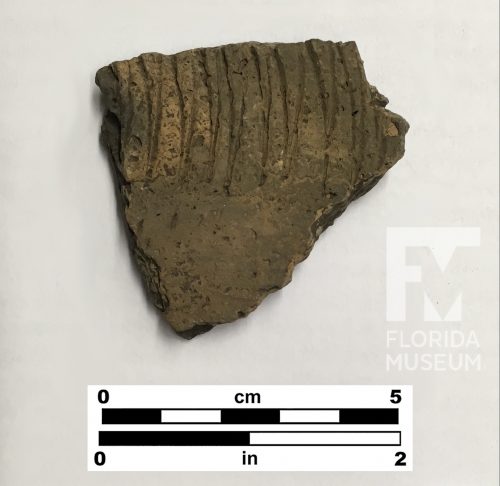
I show it to as many Southeastern archaeologists as I can. At first they show a light of recognition, taking in the rocker stamped decoration, common on Woodland pottery. It usually consists of zig-zag lines made by rotating and rocking a sharp object, such as the edge of a shell. Then the archaeologists take a closer look, beginning to squint, and they ask, “is that shell temper?” From then on, confusion reigns.
You see, these two things: rocker stamping and shell tempering, simply shouldn’t coexist. To date, all our evidence, from hundreds of sites in the region, tells us that pottery made by grinding up burnt shell and adding it to clay didn’t become common until hundreds of years after people decorated with rocker stamping.
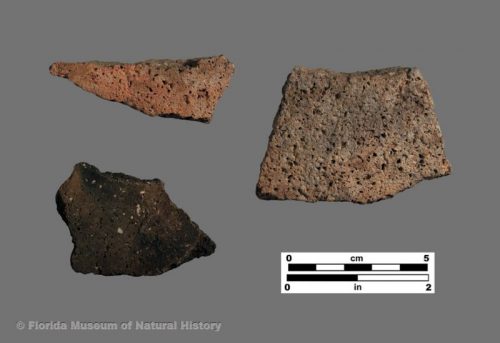
There is no pottery type currently named that has the characteristics of shell tempering AND rocker stamping. The culture and lifeways of the people who made rocker stamped pottery and shell tempered pottery were distinct, just as our lives are very different day-to-day from those of people living 500 years ago.
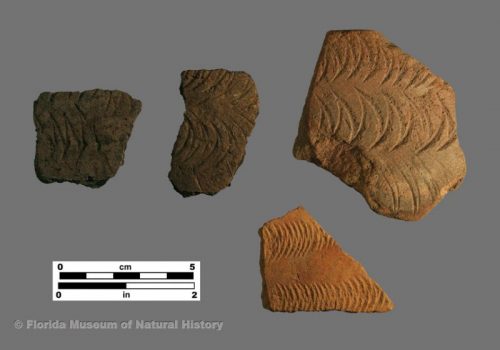
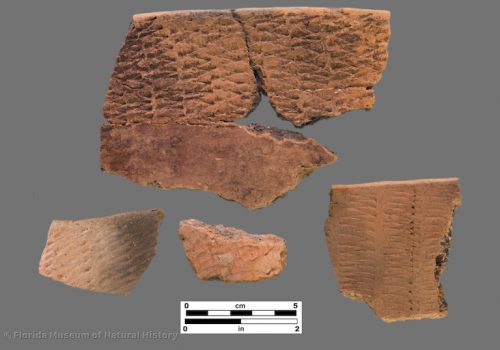
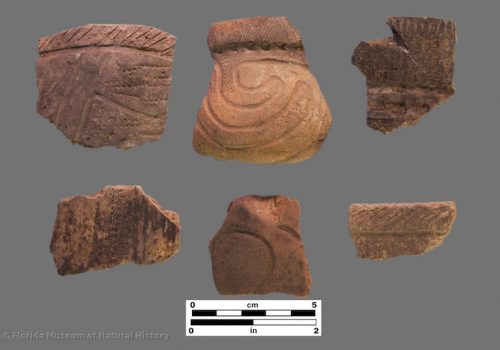
Unfortunately, I don’t have specific provenience information for this sherd, so I don’t know if it was found in earlier or later phases of site occupation at Jaketown. So I’m left to wonder, did a Middle or Late Woodland potter make a technological leap into shell tempering, or did a Mississippian potter make a stylistic throwback? Or, is there an as yet unidentified middle ground, where for a time these two techniques overlapped?
The mystery sherd sits on the shelf, awaiting the next clue. If you have a tip, please weigh in.